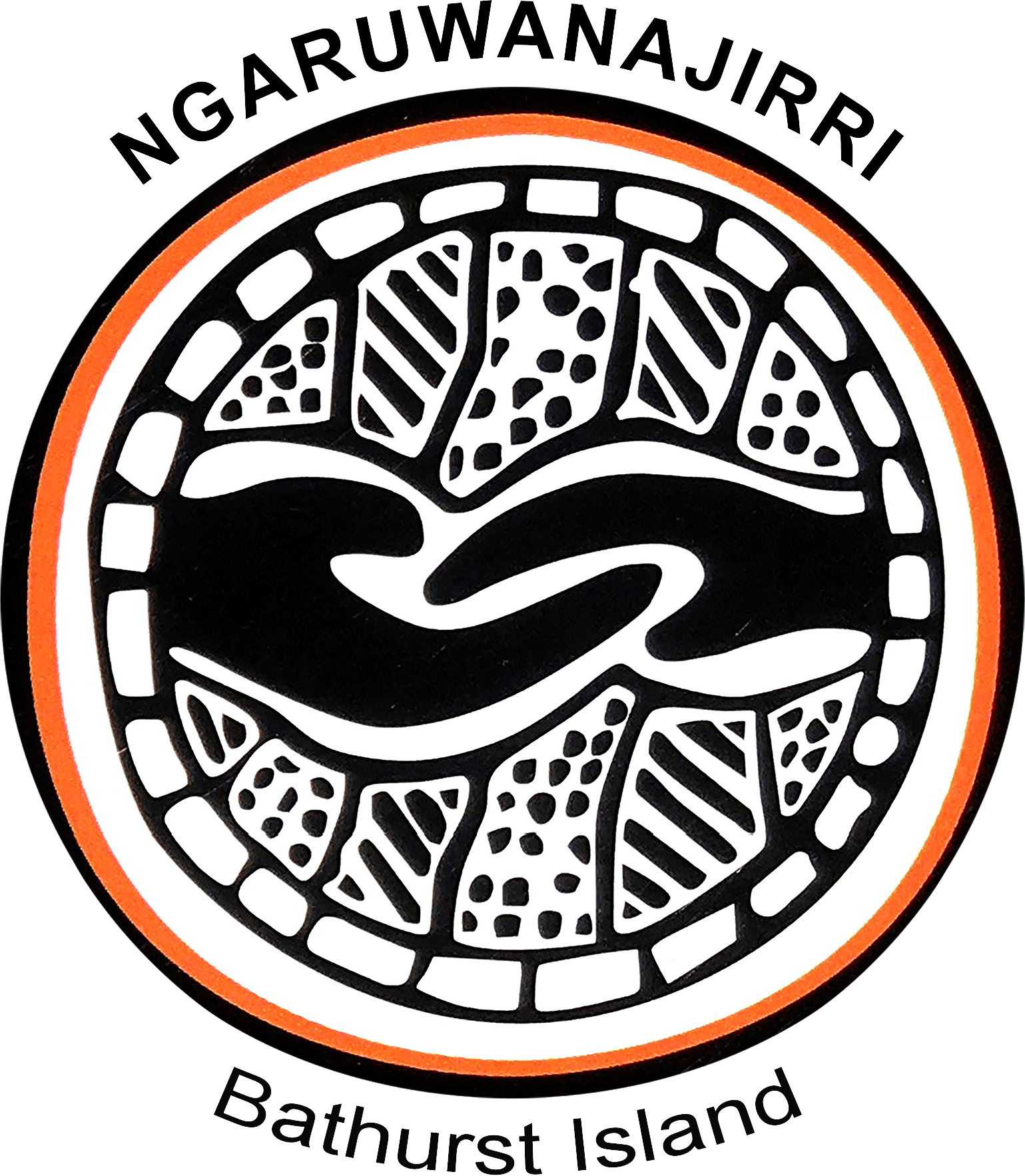Art making
Carving
Ngaruwanajirri carvers work on traditional forms and motifs that have been a part of their culture for time in memorial. These are formed with a refined use of hand tools and electric grinders. The ironwood timber used for all carvings is collected sustainably from local fallen ironwood trees. As the timber is so heavy the fallen trees are cut into segments with a chainsaw before being brought back to Ngaruwanajirri to be cut down further and turned into carvings.
Natural ochres
The Islands have many sources of natural clays and ochres from which Tiwi People have, over centuries, honed a palette of colours for decorating their own bodies as well as cultural items. Dry white is sometimes found in the cliffs as well as a pipeclay found in wetter environments near inland water ways streams. The bright Tiwi yellow ochre is dug as lumps from a cliff and transported to the workshop.
Water colours
In recent years, the artists at Ngaruwanajirri have expanded their skills by taking up new media, particularly watercolour. With gentle support from Joy Naden, several artists have joyfully embraced the medium and developed a proficient handling of this contemporary medium, uncovering previously hidden paths for their practice.
The archival papers used for watercolour paintings have a smoother texture compared to those used for ochre paintings, as the medium does not demand a coarse surface to adhere. This delicate foundation highlights the gentle nature of the medium.
Printing
In 2021, master printer Basil Hall conducted a workshop in Ngaruwanajirri, introducing printing to the artists. With support from Arts NT, Basil provided materials like drawing tools, zinc plates, "sugar lift," "ground" containers, and acetate sheets. Over five days, the artists, guided by Basil, explored the printing process. Alfonso Apuatimi, Jane Tipuamantumiri, and Alexandra Kantilla showed exceptional interest and productivity.
Batik
For decades, Ngaruwanajirri has been known for its batik silk scarves. Joy Naden, a fabric artist herself with a keen interest in the unique dyeing practices of various cultures, has played a key role in ensuring that the artists have been able to develop simple processes they can master, which also produce beautiful fabrics of rich colour and design.
